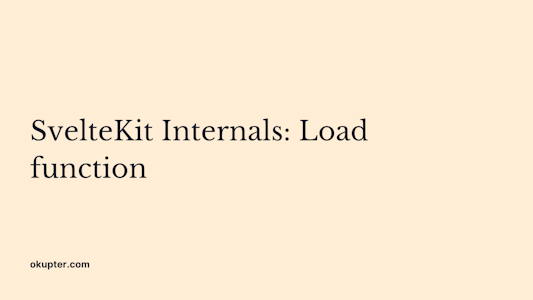Introducing the "SvelteKit Internals" series

Justin Ahinon
Last updated on
As someone who has been using SvelteKit for both personal and professional projects, I can confidently say that I am a huge fan of the framework.
In this blog post series, I will be sharing some of the insights and knowledge I have gained about how SvelteKit works. The goal is to provide a high-level overview of the framework and give you a better understanding of how to use it in practice.
Here are a few things to note about this series.
They will be written in TypeScript
SvelteKit is amazing on its own, but using it with TypeScript takes it to the next level. There are many benefits to using SvelteKit with TypeScript, including auto-completion and type-safe data sharing between the server and client. Plus, SvelteKit's internal modules are very well-typed, making it a joy to work with.
In short, if you want to make the most of SvelteKit, using it with TypeScript is a no-brainer. Trust me, you won't be disappointed.
They are not a substitute for the official documentation
When working on SvelteKit projects, I always refer to the official documentation because it is well-written and organized, making it easy to find what you're looking for.
The goal of this series is not to replace the official documentation, but rather to provide a practical perspective on how SvelteKit works and how to use it effectively. This will be based on my own experiences building SvelteKit projects, as well as reading the documentation and other people's code. In short, these posts will complement the official documentation and provide additional insights.
They are not tutorials
The posts in this series will not be tutorials, but rather a collection of tips and tricks that I have learned over time. I will provide many examples, but I will not be explaining how to build a SvelteKit project from scratch.
With that said, I hope you will find this series useful and that it will help you build better SvelteKit projects. Happy reading!

